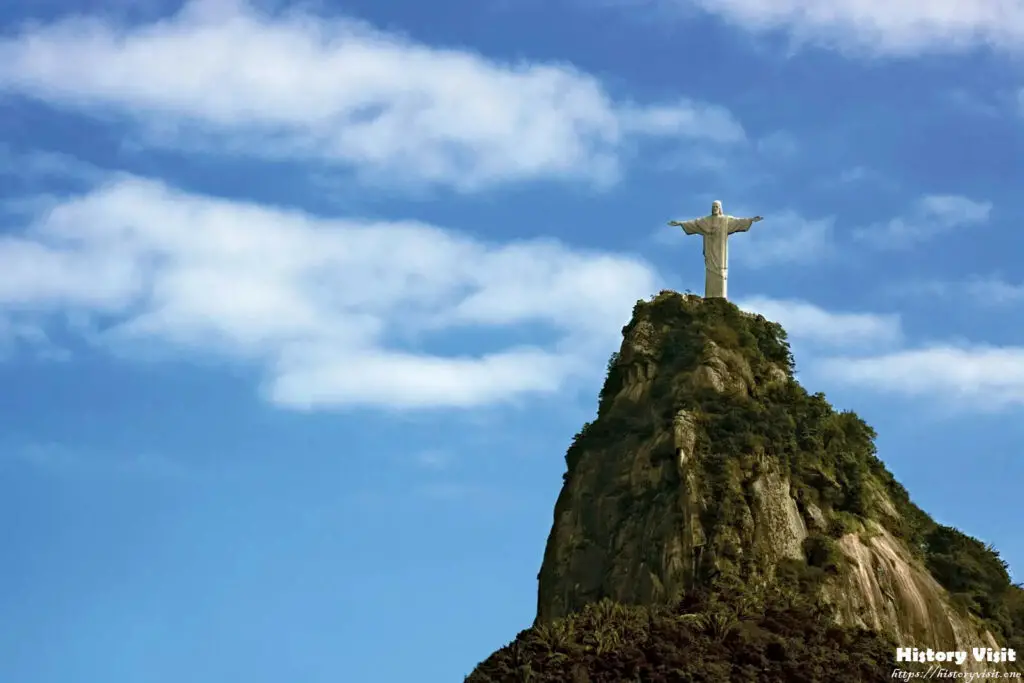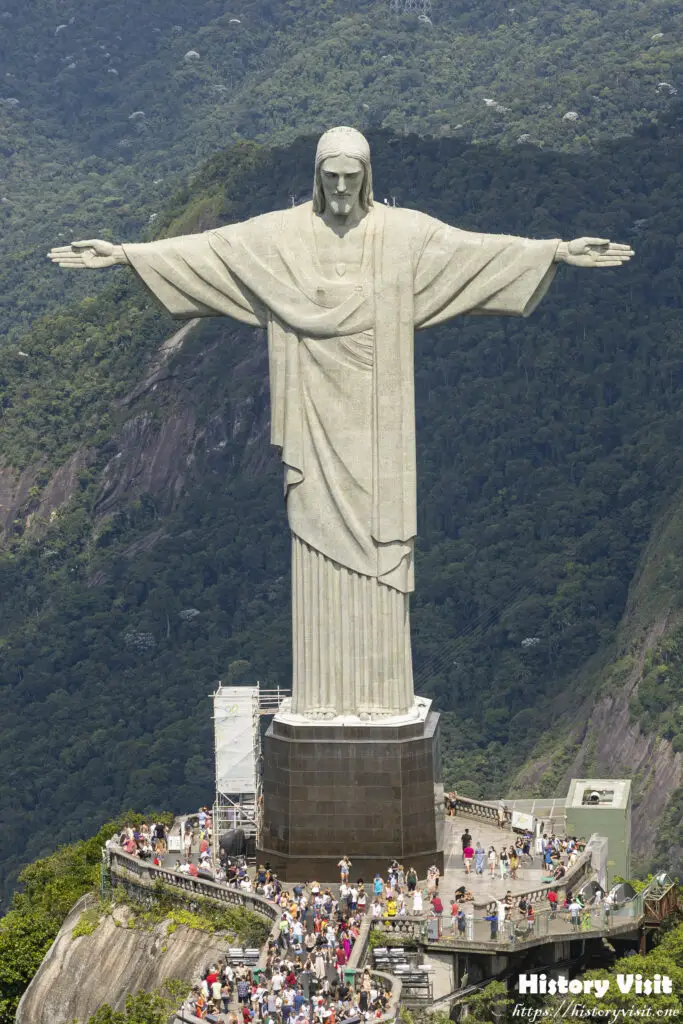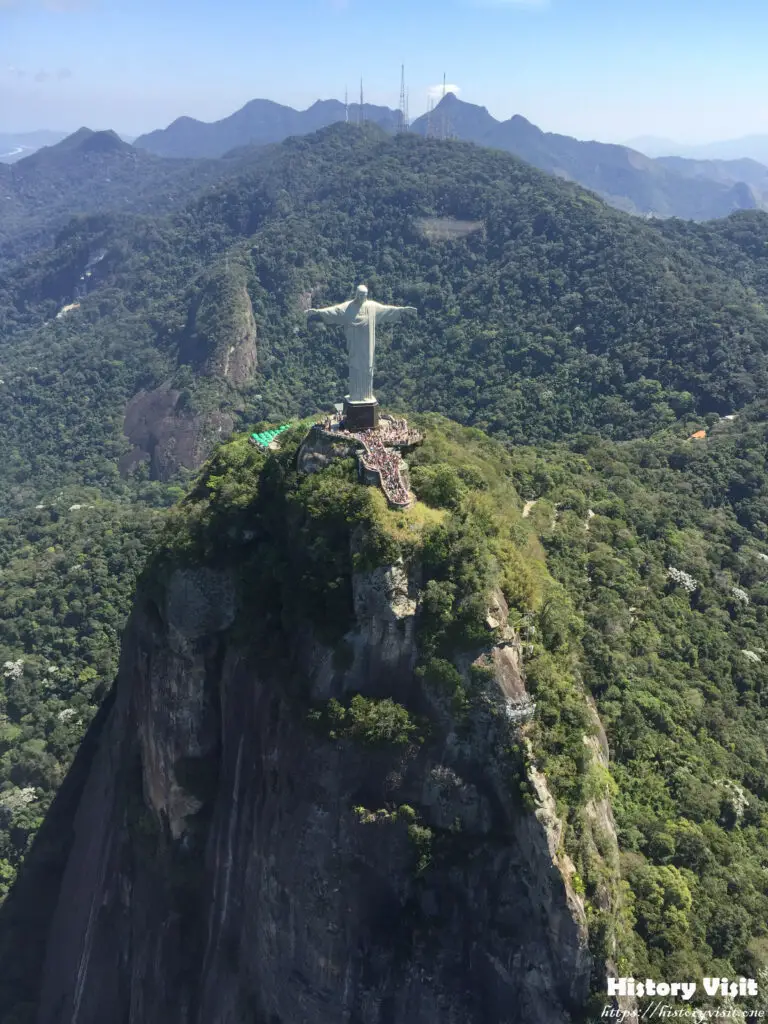Christ the Redeemer: Symbol of Faith and Unity

Introduction
Perched atop the Corcovado mountain overlooking the vibrant city of Rio de Janeiro, Brazil, stands one of the world’s most iconic symbols of faith and unity: Christ the Redeemer. This colossal statue, sculpted by French artist Paul Landowski and completed in 1931, is not merely a monument but a testament to human devotion and ingenuity. Its outstretched arms seem to embrace not only the city below but all who gaze upon it, transcending religious boundaries and inspiring awe in people of diverse backgrounds.
In a world often divided by politics, religion, and ideology, Christ the Redeemer serves as a powerful reminder of our shared humanity and spiritual yearning. Regardless of one’s beliefs, the statue’s presence commands respect and admiration, symbolizing hope, compassion, and the possibility of redemption. As we delve into the history, architecture, and cultural impact of this remarkable monument, we uncover layers of meaning that resonate far beyond the boundaries of Rio de Janeiro.
Historical Context

The idea for Christ the Redeemer was born in the early 20th century, as Brazil sought to assert its national identity and promote Christian values. In 1921, the Catholic Circle of Rio proposed the construction of a large statue of Jesus Christ to overlook the city, envisioning it as a symbol of peace and protection. French sculptor Paul Landowski won the commission for his design, which emphasized a sense of grandeur and universality.
Construction of the statue presented numerous challenges, from transporting materials up the steep mountainside to enduring adverse weather conditions. Yet, despite these obstacles, the project persevered, fueled by the collective determination of artists, engineers, and laborers. The result was a monumental feat of engineering and craftsmanship, standing at 98 feet tall with arms spanning 92 feet wide, making it one of the largest Art Deco sculptures in the world.
The completion of Christ the Redeemer in 1931 marked a triumph of human creativity and collaboration, solidifying its place as an enduring symbol of Brazilian culture and spirituality. Over the decades, the statue has weathered storms, earthquakes, and even acts of vandalism, yet it remains an indomitable beacon of hope and inspiration for millions around the globe.
Architectural and Artistic Features

Christ the Redeemer’s architectural and artistic features are a testament to the skill and vision of its creators. Crafted from reinforced concrete and soapstone, the statue’s imposing figure exudes strength and serenity, with outstretched arms inviting all to seek solace and salvation. Its Art Deco design reflects the aesthetic sensibilities of the early 20th century, characterized by clean lines, geometric forms, and a sense of dynamism.
Beyond its physical dimensions, the statue is laden with symbolism, embodying both Christian theology and Brazilian cultural identity. The outstretched arms evoke Christ’s embrace of humanity, while the position of the hands signifies peace and blessing. The location of Christ the Redeemer atop Corcovado mountain reinforces its role as a spiritual guardian, watching over the city and its inhabitants with benevolent grace.
The artistic style of Christ the Redeemer is imbued with a sense of timelessness, transcending the boundaries of any single faith or tradition. While rooted in Christian iconography, the statue’s universal message of love, forgiveness, and redemption resonates with people of all backgrounds, fostering a sense of unity and solidarity in an increasingly divided world.
Cultural Impact

Since its inauguration, Christ the Redeemer has become a symbol of Brazilian identity and pride, attracting millions of visitors from around the world each year. Its towering presence on the Rio skyline has become synonymous with the city itself, featured prominently in postcards, films, and television broadcasts. Beyond its role as a tourist attraction, the statue serves as a focal point for religious pilgrimages, cultural celebrations, and national commemorations.
The cultural impact of Christ the Redeemer extends far beyond the borders of Brazil, earning it recognition as one of the Seven Wonders of the Modern World. Its image has been reproduced on countless souvenirs, artworks, and advertisements, cementing its status as a global icon of faith and inspiration. In times of crisis and uncertainty, the statue offers solace and reassurance, reminding us of our shared humanity and the enduring power of hope.
Despite its enduring popularity, Christ the Redeemer faces ongoing challenges, from environmental degradation to the pressures of mass tourism. Efforts to preserve and protect the statue for future generations are underway, including conservation initiatives and sustainable tourism practices. By safeguarding this cultural treasure, we ensure that Christ the Redeemer continues to serve as a beacon of light and hope for all who seek solace in its shadow.
Preservation Efforts and Challenges

Preserving Christ the Redeemer for future generations requires a delicate balance between conservation and accessibility. The statue’s exposed location atop Corcovado mountain exposes it to the elements, including erosion, humidity, and tropical storms. Conservation efforts involve regular maintenance and restoration work, utilizing specialized techniques and materials to ensure the statue’s structural integrity.
Environmental factors pose another threat to Christ the Redeemer, including deforestation, pollution, and climate change. Increased urbanization and industrial activity in the surrounding area contribute to air and water pollution, impacting the statue’s appearance and longevity. Sustainable development initiatives aim to mitigate these effects, promoting responsible stewardship of the natural environment while accommodating the needs of local communities and visitors.
The challenges of preserving Christ the Redeemer are not limited to physical threats but also encompass social and economic considerations. Mass tourism brings both benefits and drawbacks to the area, generating revenue and employment opportunities while also straining infrastructure and degrading the visitor experience. Sustainable tourism practices, such as visitor quotas, eco-friendly transportation options, and cultural education programs, seek to balance the demands of tourism with the imperative of conservation.
Conclusion

In the heart of Rio de Janeiro, amidst the hustle and bustle of urban life, stands a silent sentinel of hope and redemption: Christ the Redeemer. For nearly a century, this iconic statue has stood as a beacon of faith and unity, inspiring millions with its timeless message of love and compassion. As we reflect on its history, architecture, and cultural impact, we are reminded of the power of art to transcend boundaries and unite humanity in common purpose.
From its humble beginnings as a dream of devout believers to its status as a global symbol of inspiration, Christ the Redeemer has captured the imagination of people around the world. Its towering presence on the Rio skyline serves as a reminder of our shared humanity and spiritual aspirations, inviting all who gaze upon it to find solace in its shadow. As we strive to preserve and protect this cultural treasure for future generations, let us also heed its timeless message of peace, love, and redemption.


